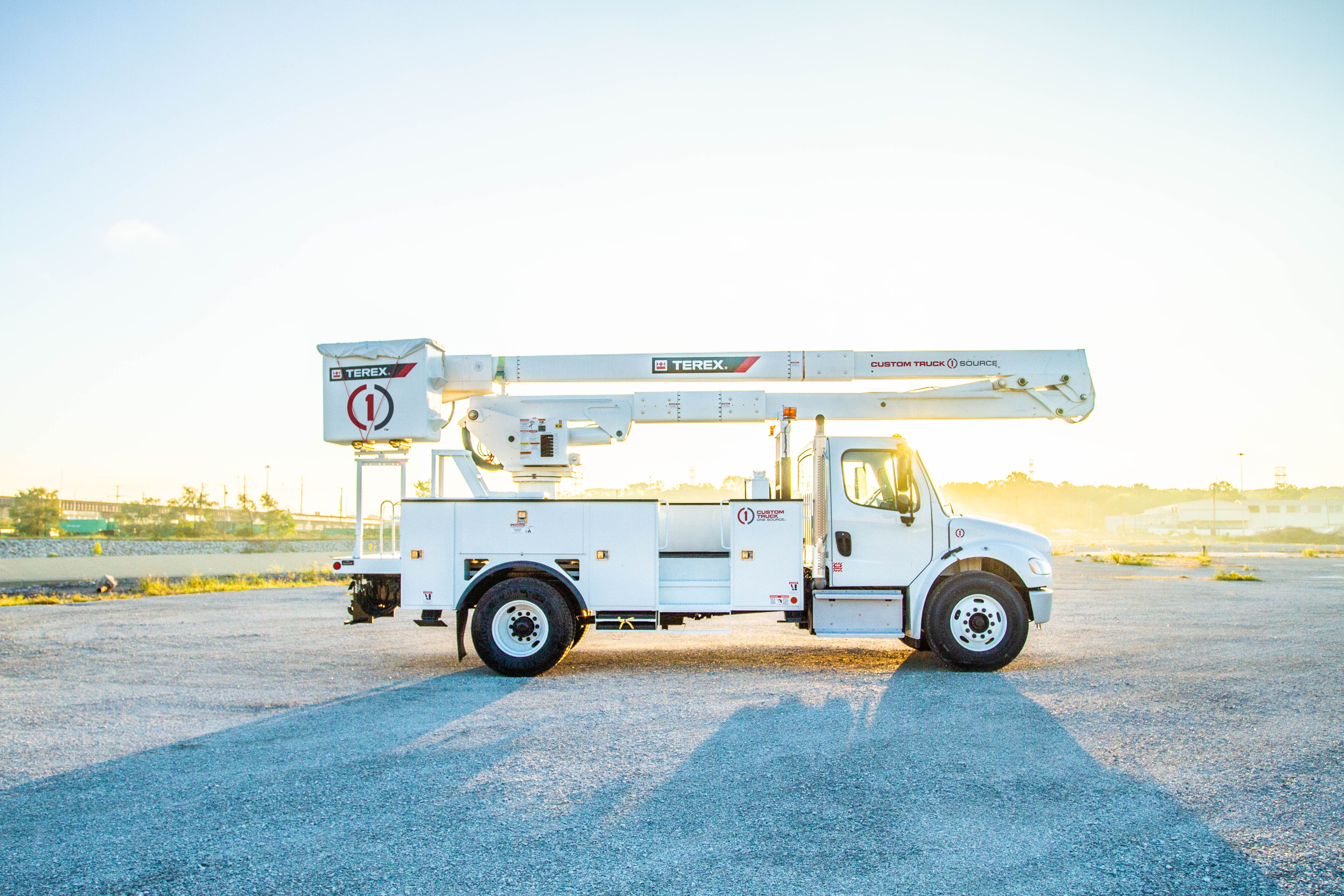
Bucket trucks are essential equipment these days for a variety of industries. From exterior painting and window washing to construction, electric utility and telecom – the right bucket truck applied to the right kind of job can make all the difference between getting it done and getting it done efficiently, quickly and well within budget.
However, choosing the right bucket truck for your fleet or your business requires a careful analysis of your needs, expectations and the unique requirements of the jobs it is expected to perform.
This quick primer will help you think about your situation. You can then make a list of the equipment type you’ll need before you go shopping:
# 1: INVOLVE THE RIGHT PEOPLE
- The finance guy at your business may not be the best person to decide which bucket/boom truck you should buy. Costs aside, there are specs to consider. Personnel who handle this equipment on a day-to-day basis or have real world experience should be part of the decision-making process.
# 2: KNOW YOUR NEEDS
- Explore the kind of jobs you will use your new (or new-to-you) equipment for.
For example, how high will the aerial equipment need to reach? (If the job is at 50 feet but cannot be accessed from directly underneath, you will need a truck that is rated for greater working height than 50 feet because the further the equipment has to be positioned back, the more height allowance will be necessary.)
# 3: ARTICULATED OR TELESCOPIC?
- An articulated boom/bucket truck has parts on joints that fold and bend easily. This affords a lot of extra maneuverability, especially indoors or in tight spaces where the equipment has to negotiate around a variety of obstacles.
Within the articulated category, there are things like Over Center and Non-Over Center to consider. An Over Center lift will allow the bucket to move beyond the center of the truck. This extends the side reach, a very useful feature for forestry and construction jobs. A Non-Over Center lift cannot move beyond the center of the truck and therefore is more restricted in its reach.
Unlike an Articulated bucket, a Telescopic one does not have jointed moving parts. Instead, it moves upwards and outwards. But what the Telescopic lacks in maneuverability, it makes up for in stability. So if the job is located at a great height, or the terrain is rough and rocky, or if heavy materials are being moved from one point to another, then the Telescopic will probably be a more efficient choice than an Articulated one.
# 4: BODY TYPE
- The body type you choose – steel, aluminum or fiberglass — will have a direct impact on factors like intended use, fuel efficiency and durability.
# 5: WEIGHT CAPACITY
- Most bucket trucks have a platform capacity that ranges between 400 lbs and 2,000 lbs. The higher the elevation afforded and the greater the side reach, the lesser you get by way of platform weight capacity.
# 6: CHASSIS
- Besides regulation necessities, the type of chassis you select can affect things like platform height, material handling capacity, payload etc.
# 7: FUEL TYPE
- Though diesel engines power most bucket trucks, some newer models are incorporating hybrid technology into their power systems. This allows the truck to run on diesel, while an electric motor powers the aerial functions.
# 8: TRANSMISSION
- Bucket trucks employ both manual and automatic transmissions. Cost of operating the two is roughly the same, so the choice usually comes down to a matter of preference. However, a manual transmission does offer more control. On the other hand, an automatic transmission (which costs a little more) affords a smoother driving experience with less roll-back on inclines.
# 9: ACCESSORIES
- Choice of accessories depends on the nature of the tasks a bucket truck is expected to perform. Tasks can largely be divided into three industries: telecom, forestry and general utilities.
Telecom: Wire dispenser, hotline jumper holder, air compressor, bucket step.
Forestry: Chainsaw scabbards, chainsaw boom, boom strap.
General Utilities: Toolbox, bucket cover, ground protection mat, wheel chock.
# 10: CUSTOMIZATION
- When it comes to bucket trucks, one size doesn’t fit all. If your must-have list of features has some special specifications, customization may be the most cost-effective option depending on the nature of the job you have at hand.
CALL OR EMAIL US IF YOU ARE INTRESTED IN A NEW OR USED BUCKET TRUCK!
Custom Truck One Source is the first true single-source provider of specialized truck and heavy equipment solutions. With sales, rentals, aftermarket parts and service, equipment customization, remanufacturing, financing solutions, and asset disposal, our team of experts, vast equipment breadth and integrated network of locations across North America offer superior service and unmatched efficiency for our customers.



